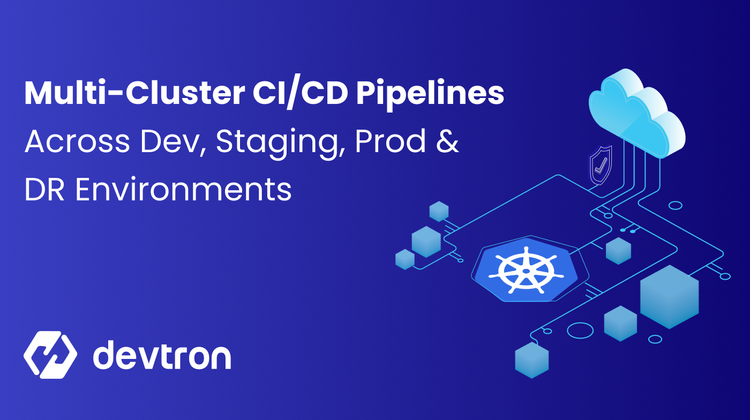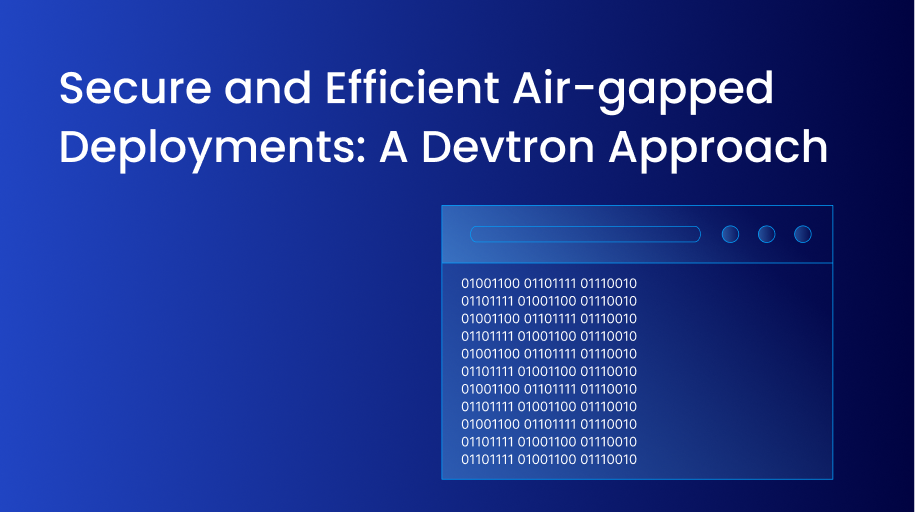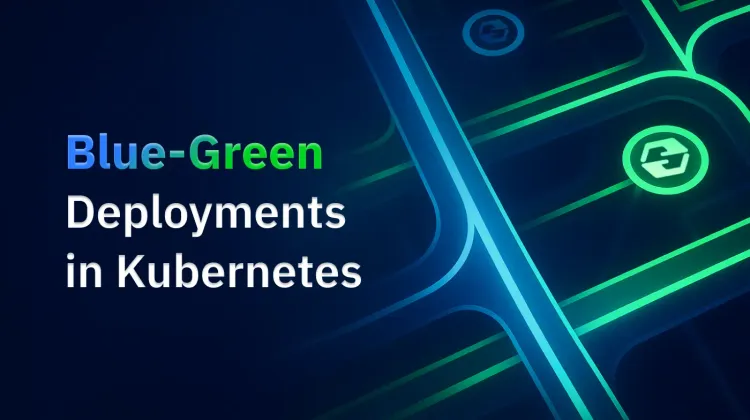Our panelists come from diverse backgrounds and have a wealth of knowledge and expertise in Kubernetes, DevOps, and DevSecOps. They have worked on a variety of projects, from small-scale startups to large enterprise systems, and have faced and overcome numerous challenges along the way.
In this discussion, we will explore the latest trends and innovations in Kubernetes, DevOps, and DevSecOps, including best practices, tools, and strategies to help you stay ahead of the curve. We will also discuss the challenges that organization face when adopting these technologies, and the importance of integrating security into the DevOps workflow.
CI/CD Ops for Multi-Cloud Leveraging K8s
Whether you are a seasoned professional or just getting started with Kubernetes, DevOps, or DevSecOps, this discussion is for you. We hope that you will find it informative and valuable, and that you will leave with new insights and ideas to help you succeed in your projects. So, let's dive in and explore the exciting world of Kubernetes, DevOps, and DevSecOps!
Thanks to Hasgeek team for hosting this panel discussion where Devtron sponsored this Panel discussion for the topic of Discussion: "CI/CD Ops for Multi-Cloud Leveraging K8s".
What is CI/CD, and what is CI/CD ops for k8s?
Here panelists discuss their experience of dealing with the different scales, and also they talk about how the experience of dealing with the multi-cloud Kubernetes Environment.
CI/CD stands for Continuous Integration/Continuous Deployment. It is a set of software engineering practices that aim to automate and streamline the process of building, testing, and deploying software changes to production. The primary goal of CI/CD is to help teams deliver software faster, more reliably, and with higher quality. CI/CD involves several steps, including code compilation, automated testing, and packaging.
Continuous Integration (CI) is integrating code changes into a shared repository frequently, usually several times a day. It ensures that each change to the codebase is tested and validated. Continuous Deployment (CD) is the practice of automatically deploying code changes to production after they pass a series of automated tests. CI/CD Ops for k8s, or CI/CD for Kubernetes, is a set of practices and tools used to implement CI/CD in a Kubernetes environment. Kubernetes is an open-source container orchestration platform that helps automate containerized applications' deployment, scaling, and management.
CI/CD Ops for k8s involves using tools such as Jenkins, GitLab, or Spinnaker to automate the entire CI/CD pipeline, including building and testing Docker images, deploying them to Kubernetes clusters, and monitoring the entire process. It helps teams ensure that their applications always run the latest code and that any changes are deployed quickly and efficiently.
The evolution of CI/CD
This is the segment where panelists talk about how they dealt with Complex CI/CD setups while working with the services like ECS and/or Virtual Machines. Where the CI/CD setup was done using complex tools like Jenkins and other applications that are not suitable for delivering a solution to the application on a bigger scale.
Continuous Integration (CI) first emerged in the early 2000s as a way to improve software development processes. At that time, the practice involved frequently integrating code changes into a shared repository and automating the process of building and testing the code. The goal was to catch integration issues early and ensure the codebase remained stable.
As the software development process became more complex and distributed, the concept of Continuous Deployment (CD) emerged. Continuous Deployment involves automatically deploying code changes to production after they pass a series of automated tests. Over time, the concept of CI/CD has evolved to include more automation, testing, and deployment scenarios. With the advent of cloud computing and containerization technologies like Docker, CI/CD has become even more critical.
Today, CI/CD involves a fully automated pipeline that includes continuous testing, security scanning, and deployment to multiple environments, including production. It also includes monitoring and logging to ensure that any issues are quickly identified and resolved. CI/CD has become a critical part of software development and operations, enabling teams to deliver software faster, with higher quality and reliability, and at scale. As technology evolves, we expect to see further advancements in CI/CD tools and practices.
The landscape of current CI/CD tools and how open source is making an impact
This is part of the Panel discussion where the speakers give their insights about the world of the CI/CD tools and also discuss how the CI/CD Ecosystem is improving every single day and how the tools in this domain are making a difference every single day in production in different use cases. Here speakers also discuss how the CI/CD right tool and right strategy has helped them accelerate the DevOps lifecycle.
The landscape of CI/CD tools has evolved significantly in recent years, with many new tools and technologies emerging to address the increasing demand for faster and more efficient software delivery. Here are some of the most popular CI/CD tools in use today:
Jenkins: Jenkins is one of the most popular open-source CI/CD tools, widely used for automating building, testing, and deploying applications.
Spinnaker: Spinnaker is an open-source multi-cloud continuous delivery platform developed by Netflix and Google that provides deployment management and rollback capabilities.
Devtron: Devtron is an open-source DevOps CI CD tool. Based on the configuration file in the repository, it enables you to build, test, and even deploy your code automatically. This is the state-of-the-art technology that is going to make the best possible use of the resources in the Kubernetes space, where this platform not only gives rise to the best resource but also gives the best possible resources to the cross-functional teams.
Open-source CI/CD tools have significantly impacted the software development industry, providing developers with easy access to powerful tools and technologies at no cost.
They have also contributed to developing a collaborative and innovative software development culture, where developers can easily share and contribute to each other's code, tools, and best practices. The availability of open-source CI/CD tools has also lowered the barrier to entry for smaller organizations, enabling them to compete with larger organizations in terms of software delivery speed and quality. Overall, open-source CI/CD tools have played a crucial role in accelerating software development and improving the quality of software products.
Experiences
A Kubernetes Deployment instructs Kubernetes on how to generate or change instances of pods that contain containerized applications. Deployments can help to efficiently grow the number of replica pods, enable the controlled rollout of new code, or roll back to an earlier deployment version if needed.
What is your experience setting up CI/CD ops for k8s
This is the segment where speakers share their experience in dealing with the Ci/CD setup at scale on the Kubernetes Cluster. This is a question where the panelists talk about their experience in dealing with CI/CD applications at scale and share their experience dealing with the CI/CD tools at that scale from Day one in their respective organizations.
In Udaan, Blinkit, and Dashtoon panelists have had experience in delivering solutions on a different scale. They shared this experience in deploying multiple microservices on Kubernetes multicluster.
Trade-offs & Pitfalls - this is the segment in the panel discussion where they discuss the advantages and disadvantages of Kubernetes Deployment.
What kinds of efforts are required to set up CI/CD ops?
Setting up a Continuous Integration and Continuous Deployment/Continuous Delivery (CI/CD) pipeline requires several efforts across different software development and deployment stages. Here are some of the key efforts required to set up a CI/CD pipeline:
Plan: The first step in setting up a CI/CD pipeline is to plan for the necessary resources, tools, and workflows required for the pipeline. This includes defining the scope of the pipeline, identifying the stages involved, and creating a roadmap for the pipeline.
Code: Once the planning is done, developers write code that meets the requirements specified in the plan. They also write automated tests for the code to ensure it is functional and meets the expected quality standards.
Build: The next step is to build the code, which involves compiling it, packaging it into an executable format, and generating the artifacts needed for deployment. Test: After building the code, the pipeline runs automated tests to validate the code's functionality, performance, and security.
Deploy: Once the code passes all the tests, it is deployed to the appropriate environment, such as staging or production.
Monitor: After deployment, the pipeline monitors the application's performance and usage metrics to ensure it functions correctly and meets user expectations.
Iterate: Finally, the pipeline goes through an iterative process of analyzing feedback and making improvements to the pipeline to make it more efficient and effective.
Setting up a CI/CD pipeline requires collaboration and coordination between developers, testers, operations teams, and other software development and deployment stakeholders. It also involves selecting the appropriate tools and technologies, establishing processes and workflows, and creating a continuous improvement and innovation culture.
What are the inefficiencies to watch for and what are the pitfalls to avoid?
Kubernetes is a complex system; setting up and managing a Kubernetes cluster can be challenging. There are several inefficiencies to keep a watch for and pitfalls to avoid when working with Kubernetes clusters:
Resource Overallocation: One of the most significant inefficiencies in a Kubernetes cluster is resource overallocation, where more resources are allocated to a pod or container than required. This can lead to resource wastage and poor performance.
Resource Underutilization: On the other hand, resource underutilization can also be an issue where pods or containers are not utilizing all the allocated resources, leading to suboptimal performance and inefficient resource utilization.
Network Inefficiencies: Networking can be challenging in a Kubernetes cluster, especially when dealing with multiple clusters or nodes. Poor network performance can lead to slow communication between nodes, pod failures, and poor application performance.
Security Issues: Kubernetes clusters can be vulnerable to various security threats, such as unauthorized access, data breaches, and DDoS attacks. Security issues can result in data loss, application downtime, and reputational damage.
Configuration Management: Kubernetes clusters require a lot of configuration management, which can be time-consuming and error-prone. It's important to keep track of configuration changes and ensure consistency across all nodes and clusters.
To avoid these inefficiencies and pitfalls, it's essential to clearly understand your cluster's requirements and carefully plan your deployment strategy. Here are some best practices to follow:
- Regularly monitor resource utilization and optimize resource allocation.
- Ensure that networking is properly configured and optimized. Implement proper security measures like access controls, encryption, and monitoring.
- Use automation and version control for configuration management. Regularly update Kubernetes and its components to ensure you have the latest security patches and bug fixes.
- Use proper resource limits and requests to ensure pods and containers are not over or underutilizing resources.
Overall, by being proactive and taking a systematic approach to cluster management, you can avoid inefficiencies and pitfalls in your Kubernetes deployment and ensure optimal performance, scalability, and reliability.
At what scale of an organization does it start making sense, and what are the alternatives for the smaller organization
Kubernetes is a powerful tool for managing containerized applications and is used by many organizations, both large and small. However, the decision to adopt Kubernetes should be based on the organization's specific needs and requirements. Here are some factors to consider when deciding if Kubernetes is right for your organization:
Scale: Kubernetes is designed to manage containerized applications at scale. If your organization has many containers or needs to manage complex applications with multiple components, Kubernetes can help streamline your deployment and management processes.
DevOps Culture: Kubernetes requires a DevOps culture and a strong collaboration between developers and operations teams. If your organization has already adopted DevOps practices, Kubernetes can help automate many manual processes in deploying and managing containerized applications.
Technical Expertise: Kubernetes is a complex system and requires technical expertise to set up and manage effectively. If your organization does not have the resources or expertise to manage Kubernetes, it may not be the best choice.
For smaller organizations that do not require the scale and complexity of Kubernetes, there are several alternatives available. There are some popular alternatives to Kubernetes for smaller organizations like Docker Swarm, EKS, and Kubernetes, or any other PaaS offering like Web apps and Container Services, and many more.
Advanced Use Cases in Kubernetes Deployment
Kubernetes is a commonly used platform in today's technology landscape that allows enterprises to build and manage applications at scale. With modularity, the container orchestration platform simplifies infrastructure provisioning for microservice-based applications, enabling effective workload management. Kubernetes provides a number of deployment options to aid in the implementation of CI/CD pipelines through the use of updates and versioning. While Kubernetes' default deployment technique is rolling updates, certain use cases necessitate a non-traditional approach to delivering or updating cluster services.
What are the challenges with CI/CD ops for k8s on multi-region and multi-cloud
Running CI/CD pipelines for Kubernetes on a multi-region and multi-cloud environment can be challenging due to the following reasons:
Network Latency: When running CI/CD pipelines across multiple regions or clouds, network latency can be a significant challenge. The time it takes for data to travel across regions or clouds can lead to slow pipeline execution times.
Data Consistency: Ensuring data consistency across multiple regions and clouds can be challenging. It's essential to ensure that data is synchronized and up to date across all regions and clouds.
Security: When running CI/CD pipelines across multiple regions and clouds, ensuring security can be a challenge. It's crucial to ensure that data is encrypted and secure when being transmitted across regions and clouds.
Resource Allocation: Managing resources across multiple regions and clouds can be a challenge. It's important to ensure that resources are allocated efficiently to avoid resource wastage and high costs.
Interoperability: Ensuring interoperability between different cloud providers can be challenging when running CI/CD pipelines across multiple clouds. It's essential to ensure that different cloud providers can work together seamlessly.
To overcome these challenges, following best practices when implementing CI/CD pipelines for Kubernetes on a multi-region and multi-cloud environment is important. Here are some best practices to follow:
Optimize Network Performance: Use a content delivery network (CDN) to optimize network performance and reduce latency.
Use Distributed Data Storage: Use distributed data storage systems like object storage or block storage to ensure data consistency across regions and clouds.
Implement Security Best Practices: Use protocols like TLS and SSL to encrypt data when transmitted across regions and clouds.
Use Resource Management Tools: Use resource management tools like Kubernetes Autoscaling to optimize resource allocation and avoid resource wastage.
Ensure Interoperability: Use open-source tools and standards to ensure interoperability between different cloud providers.
Implementing CI/CD pipelines for Kubernetes on a multi-region and multi-cloud environment requires careful planning and implementation. By following best practices and addressing the challenges mentioned above, you can achieve a more efficient and effective CI/CD process across multiple regions and clouds.
Based on the panel discussion, it is clear that there are many benefits to leveraging Kubernetes for CI/CD operations in a multi-cloud environment. Kubernetes provides a common platform that can be used across multiple cloud providers, which can help reduce complexity and increase agility. Additionally, Kubernetes provides many tools and features that can help streamline the CI/CD process, such as automated scaling, service discovery, and containerization.
However, there are also some challenges that organizations may face when implementing CI/CD operations with Kubernetes in a multi-cloud environment. These challenges may include ensuring consistent performance across different cloud providers, managing security and compliance requirements, and integrating with existing tools and workflows.
Overall, the panelists emphasized the importance of careful planning and collaboration across different teams and stakeholders when implementing CI/CD operations with Kubernetes in a multi-cloud environment. They also highlighted the need for ongoing monitoring and optimization to ensure that the system continues to meet the organization's evolving needs and goals.
In conclusion, while there are some challenges to implementing CI/CD operations with Kubernetes in a multi-cloud environment, the benefits can be significant, including increased agility, scalability, and flexibility. By leveraging Kubernetes and working closely with teams and stakeholders, organizations can build a robust and effective CI/CD pipeline that meets their unique needs and goals.









